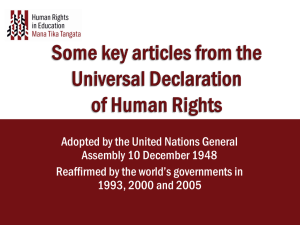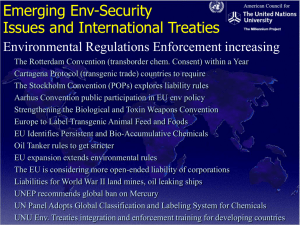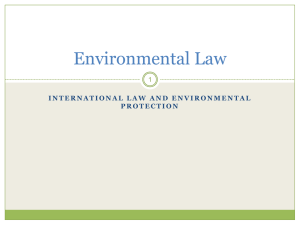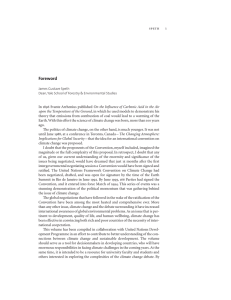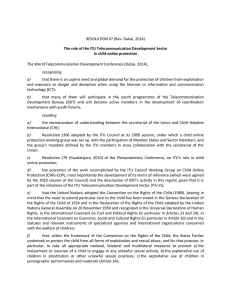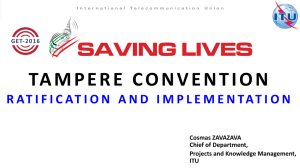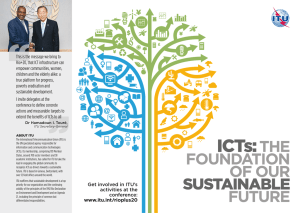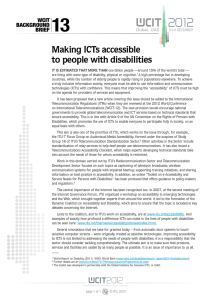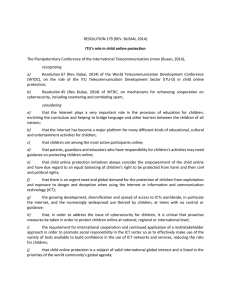2 Communications as a Human Right WCIT
advertisement
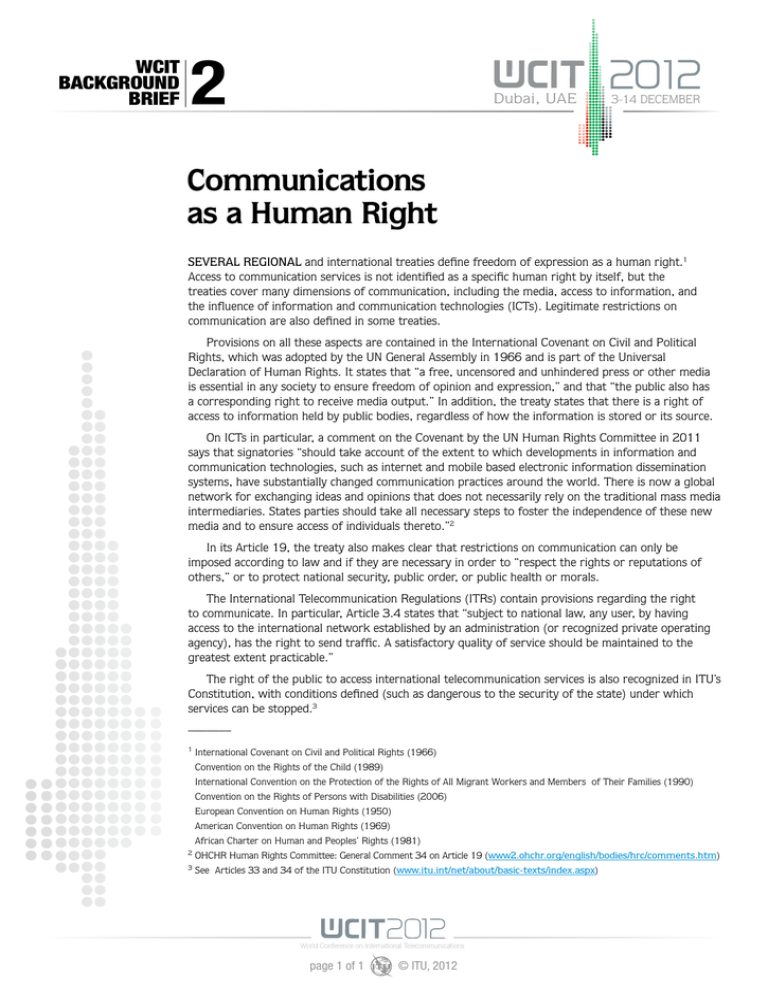
WCIT BACKGROUND BRIEF 2 Dubai, UAE 3-14 DECEMBER Communications as a Human Right SEVERAL REGIONAL and international treaties define freedom of expression as a human right.1 Access to communication services is not identified as a specific human right by itself, but the treaties cover many dimensions of communication, including the media, access to information, and the influence of information and communication technologies (ICTs). Legitimate restrictions on communication are also defined in some treaties. Provisions on all these aspects are contained in the International Covenant on Civil and Political Rights, which was adopted by the UN General Assembly in 1966 and is part of the Universal Declaration of Human Rights. It states that “a free, uncensored and unhindered press or other media is essential in any society to ensure freedom of opinion and expression,” and that “the public also has a corresponding right to receive media output.” In addition, the treaty states that there is a right of access to information held by public bodies, regardless of how the information is stored or its source. On ICTs in particular, a comment on the Covenant by the UN Human Rights Committee in 2011 says that signatories “should take account of the extent to which developments in information and communication technologies, such as internet and mobile based electronic information dissemination systems, have substantially changed communication practices around the world. There is now a global network for exchanging ideas and opinions that does not necessarily rely on the traditional mass media intermediaries. States parties should take all necessary steps to foster the independence of these new media and to ensure access of individuals thereto.”2 In its Article 19, the treaty also makes clear that restrictions on communication can only be imposed according to law and if they are necessary in order to “respect the rights or reputations of others,” or to protect national security, public order, or public health or morals. The International Telecommunication Regulations (ITRs) contain provisions regarding the right to communicate. In particular, Article 3.4 states that “subject to national law, any user, by having access to the international network established by an administration (or recognized private operating agency), has the right to send traffic. A satisfactory quality of service should be maintained to the greatest extent practicable.” The right of the public to access international telecommunication services is also recognized in ITU’s Constitution, with conditions defined (such as dangerous to the security of the state) under which services can be stopped.3 ––––––– 1 International Covenant on Civil and Political Rights (1966) Convention on the Rights of the Child (1989) International Convention on the Protection of the Rights of All Migrant Workers and Members of Their Families (1990) Convention on the Rights of Persons with Disabilities (2006) European Convention on Human Rights (1950) American Convention on Human Rights (1969) African Charter on Human and Peoples’ Rights (1981) 2 OHCHR Human Rights Committee: General Comment 34 on Article 19 (www2.ohchr.org/english/bodies/hrc/comments.htm) 3 See Articles 33 and 34 of the ITU Constitution (www.itu.int/net/about/basic-texts/index.aspx) World Conference on International Telecommunications page 1 of 1 © ITU, 2012

